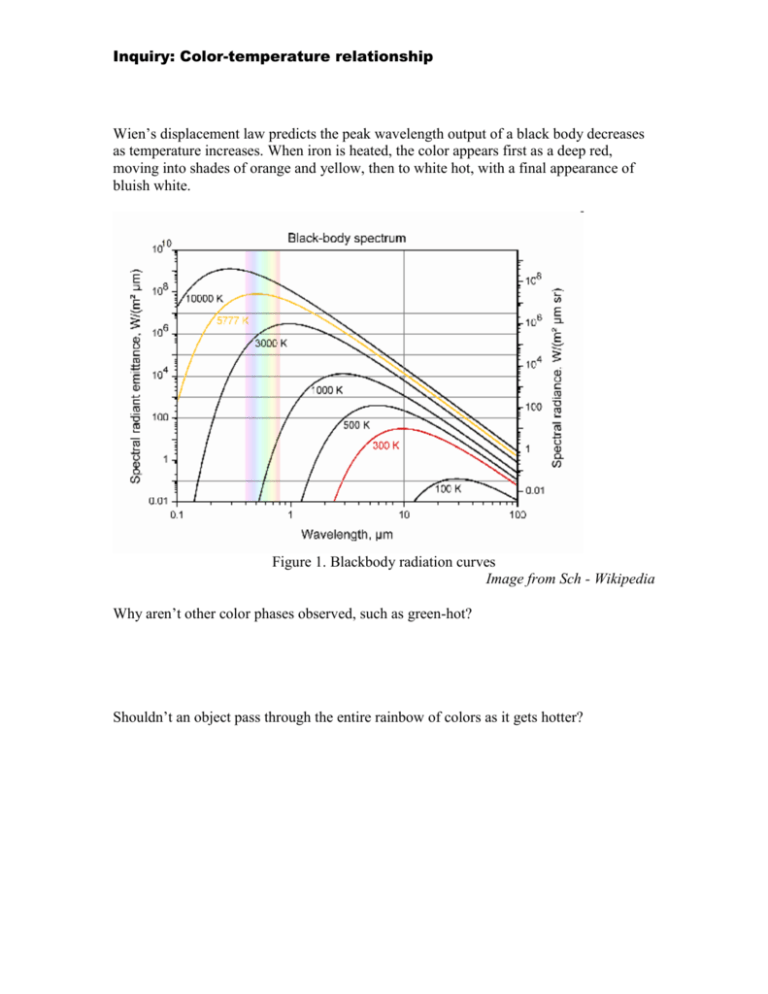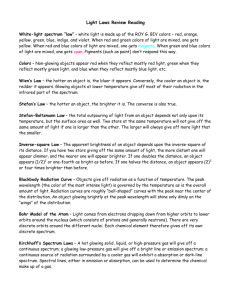Wien`s displacement law predicts the peak wavelength output of a
advertisement

Inquiry: Color-temperature relationship Wien’s displacement law predicts the peak wavelength output of a black body decreases as temperature increases. When iron is heated, the color appears first as a deep red, moving into shades of orange and yellow, then to white hot, with a final appearance of bluish white. Figure 1. Blackbody radiation curves Image from Sch - Wikipedia Why aren’t other color phases observed, such as green-hot? Shouldn’t an object pass through the entire rainbow of colors as it gets hotter? Solution: Color-temperature relationship The answer lies in the complexity of the human eye, and the way we process wavelengths. There are three cones in the eye which are sensitive to color, S (small), M (medium) and L (long), which are approximately Red, Green, and Blue. However, these are not perfect, as the red receiver is also a little sensitive to some blue (See chart below). Figure 2. CIE 1931 Standard Observer color matching functions Image from Acdx – Wikipedia As an object becomes hotter and hotter, the spectrum begins to shift from red toward blue. Remember that the total contribution in the visible part of the spectrum will not be linear. Compare the spectral content at 3000 K with the 5777 K line in figure 1. Combining the curves from Figure 1 with the color perception in Figure 2, you will trace out a curve in the color palate called the Planckian locus (Figure 3). Figure 3. Planckian locus Image from PAR - Wikipedia Notice that this locus does not enter the green portion of the spectrum. This is why you have never heard the expression “green hot”.










